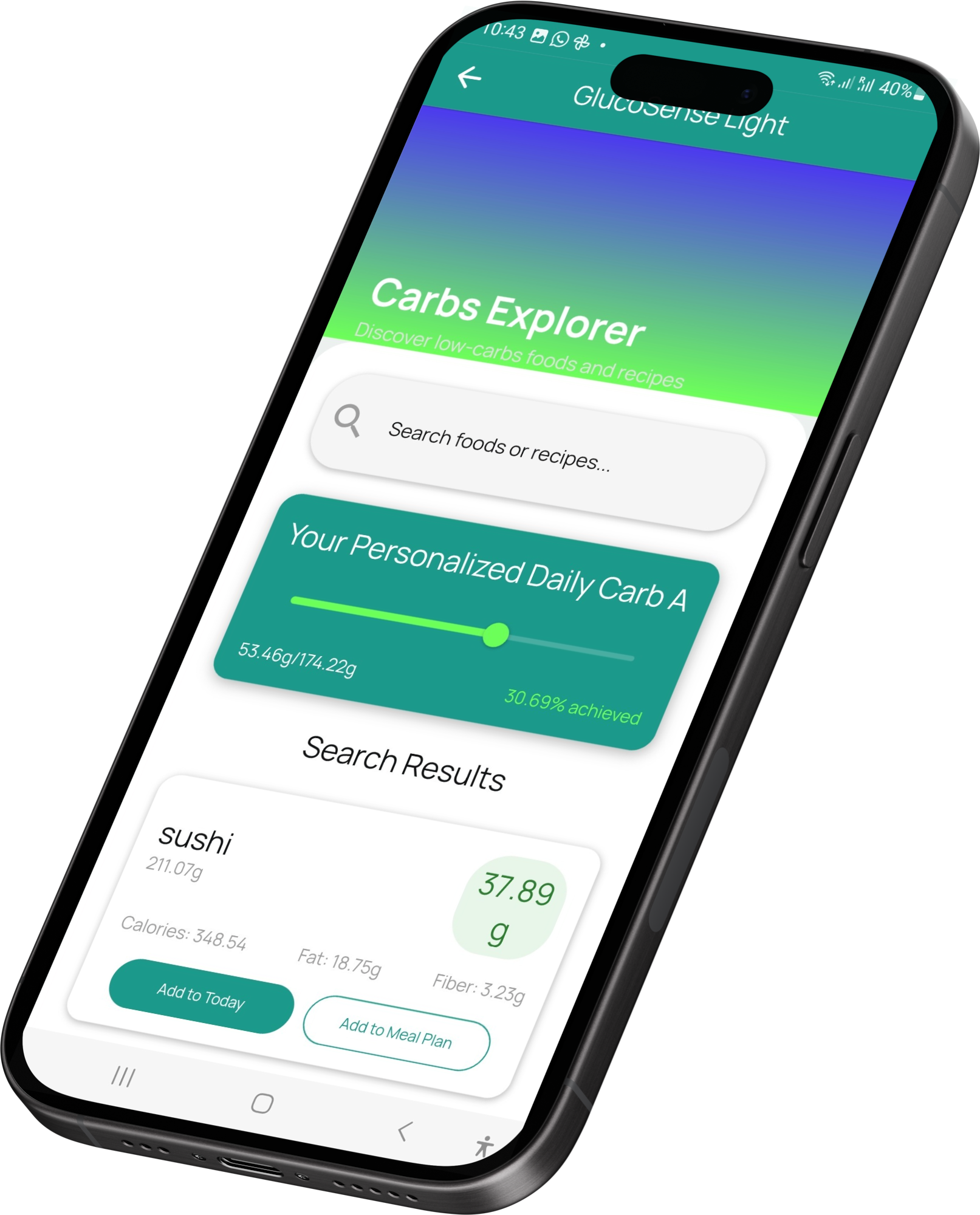Blog-Layout
Unlocking the Full Spectrum of Health: The 8 Dimensions of Wellness
Dr. Emma Thompson • February 17, 2024
Unlocking the Full Spectrum of Health: The 8 Dimensions of Wellness

Introduction
In the hustle of our daily lives, the concept of wellness often boils down to physical health and occasionally mental health. However, true wellness extends far beyond these two dimensions. It encompasses a multifaceted approach to living that interconnects various aspects of life, contributing to our overall well-being. Embracing the 8 dimensions of wellness can lead to a more balanced, fulfilled, and healthy lifestyle. Let us explore these dimensions and discover the synergy of well-being.
1. Physical Wellness: The Foundation of Vitality
Physical wellness is the most visible dimension and involves maintaining a healthy body through regular exercise, proper nutrition, and abstaining from harmful habits. It also involves seeking professional care when necessary and listening to the body's signals. Regular check-ups, staying active, and eating a balanced diet are all part of nurturing your physical wellness.
2. Emotional Wellness: Mastering Our Feelings
This dimension focuses on understanding and respecting your feelings, values, and attitudes. Emotional wellness means coping effectively with life and creating satisfying relationships. It encompasses the ability to manage emotions, such as expressing feelings without any constraints, and shaking off stress through various strategies like meditation, counseling, or simply laughing with friends.
3. Social Wellness: The Joy of Connection
Social wellness is about developing a sense of connection, belonging, and a well-developed support system. It highlights the importance of positive relationships that enrich our lives. Engaging in social activities, cultivating healthy relationships, and seeking supportive networks are all central to this dimension.
4. Intellectual Wellness: A Lifelong Journey of the Mind
The joy of learning defines intellectual wellness. It encourages creativity and stimulates mental activities. This dimension involves opening your mind to new ideas and experiences and seeking out ways to expand your knowledge and skills. Reading a book, engaging in debates, or playing a challenging game of chess can all contribute to intellectual wellness.
5. Spiritual Wellness: Finding Meaning and Purpose
Spiritual wellness allows us to find meaning and purpose in our human existence. It may involve religion, but it encompasses much more, such as ethics, values, and morals. Whether it's through meditation, nature walks, or religious practices, nurturing spiritual wellness helps us to find inner peace and balance.
6. Environmental Wellness: The Harmony between You and Your Environment
This facet of wellness encourages us to live a lifestyle that is respectful of our surroundings. This not only involves living in harmony with the Earth by respecting its ecosystems but also recognizing the impact our environment has on our personal well-being. To enhance environmental wellness, you may engage in sustainable practices such as recycling, conserving energy, and supporting eco-friendly initiatives, all while enjoying the benefits of connecting with nature through activities like hiking or gardening.
7. Occupational Wellness: Fulfillment in Our Work
Occupational wellness implies finding value in your work, which includes feeling appreciated and gaining satisfaction from your job performance and environment. It also involves balancing work with leisure time and ensuring that your career choices align with your personal values and interests. This dimension is not only about making a living but about making a meaningful life through work that provides personal fulfillment.
8. Financial Wellness: Economic Harmony for Peace of Mind
Financial wellness is an often overlooked but crucial element of overall well-being, encompassing the ability to manage your economic life. This dimension involves understanding your financial situation and taking care of it in such a way that you are prepared for financial changes while being comfortable with your current lifestyle choices. Budgeting, planning for emergencies, and investing for the future contribute to your financial wellness.
Conclusion: Integrating the Dimensions for Holistic Health
Wellness is not merely the absence of illness; it is an active, lifelong process of becoming aware of and making choices toward a more successful existence. By observing the 8 dimensions of wellness, we can strive for a balanced and integrated life. Each dimension contributes an essential part of the wellness puzzle; when we nurture all aspects, we can achieve a truly holistic state of health.
Staying Engaged with Wellness
To stay engaged and regularly informed about tips and strategies for enhancing each dimension of wellness, remember to subscribe to our health and wellness blog. By integrating these practices into your daily life, you can unlock the doors to improved health, greater happiness, and a more balanced lifestyle.
Remember, adopting a well-rounded approach to wellness is a journey that ranges far beyond mere physical fitness and mental health - it's about enriching your life in all aspects and thriving!
Optimize Your Path to Wellness – Stay tuned for our upcoming workshop series on each dimension of wellness, where we'll dive deeper into actionable steps you can take to expand your wellness journey. And don't forget to follow us on our YouTube Wellness Chanel and social media for daily wellness inspiration and community support!
Developing a Wellness Action Plan
As you look to apply these 8 dimensions of wellness in your life, consider creating a personal wellness action plan. Start by assessing your current level of satisfaction within each dimension, then set realistic goals to improve areas that need attention. Remember, small, incremental changes can have a significant impact over time.
1. Physical Wellness: Aim to incorporate at least 30 minutes of moderate exercise into your daily routine. Choose activities you enjoy, such as walking, swimming, or yoga.
2. Emotional Wellness: Dedicate a few minutes each day to mindfulness or journaling to better understand and process your emotions.
3. Social Wellness: Schedule regular check-ins with friends and family. Whether it's a phone call or coffee date, maintain those important connections.
4. Intellectual Wellness: Set a goal to read one new book each month or join a club that focuses on an area of interest to you, like a language learning group or a coding workshop.
5. Spiritual Wellness: Carve out time for meditation or prayer each day, or volunteer for causes that align with your personal values to foster a sense of community and purpose.
6. Environmental Wellness: Assess your daily habits and implement green practices, such as reducing waste, using public transport, or buying locally sourced food.
7. Occupational Wellness: If possible, work with your employer to set career goals that align with your strengths and values. Consider a new project that excites you or seek out professional development opportunities.
8. Financial Wellness: Create a budget to track your expenses, set aside savings, and manage debt. Financial planning services or apps can offer guidance and help you set long-term financial goals.
Putting it all together requires patience and persistence. Celebrating your victories, no matter how small, can motivate you to keep going. And in times of difficulty, don't hesitate to seek support from professionals—be it a personal trainer, a financial advisor, or a mental health counselor. They can provide the expertise and encouragement to help you move forward.
Engage with Us
We would love to hear your success stories and challenges as you work toward achieving wellness across all dimensions. Leave a comment below, share your experiences, and let's grow a supportive community focused on holistic well-being together.
Looking for more personalized advice? Join our newsletter for personalized tips and exclusive content from wellness experts. Your journey towards a well-rounded, healthy lifestyle is a community effort, and we're here to guide and support you every step of the way!
Fostering Wellness through Community
Remember, you’re not in this alone! Building a community around wellness can be incredibly beneficial. Connect with like-minded individuals through our online forums, local workshops, and social media groups. Share tips, celebrate milestones, and even partner up for wellness challenges.
Making Wellness a Lifestyle
Wellness is not a one-time event but a continuous engagement with life. Try incorporating wellness activities into your daily routines, like starting the day with a gratitude list to enhance your emotional wellness or taking a walking meeting at work to boost your physical and occupational wellness simultaneously.
Staying Informed
Stay informed about the latest research and trends in wellness by checking back with our blog regularly. Knowledge is power, and the more you know, the easier it will be to make informed decisions about your well-being.
Invitation to a Healthier Tomorrow
We invite you to dive deep into each dimension and discover what wellness truly means to you. Join us here next week when we tackle common misconceptions about wellness and provide insights into how to effectively navigate each of these dimensions in more detail.
Until then, we encourage you to take that first step on your wellness journey - with each stride, you'll find yourself moving closer to a harmonious and vibrant way of living.
To all the wellness warriors out there: your path to a complete, healthy, and balanced life starts here. Embrace the 8 dimensions of wellness and let them transform your approach to health. Remember, your journey to a full spectrum of health and happiness is a marathon, not a sprint - and it's a race everyone can win with the right mindset and support.
Final Thoughts
Each day is a new opportunity to make wellness-oriented choices. As you engage with the 8 dimensions of wellness, remember that balance is key. It's not about perfection, but about progress and making a conscious effort to improve every aspect of your life, one step at a time.
We can't wait to see how the 8 dimensions of wellness reshape your life. Share your journey and let's celebrate the accomplishment of whole-person health together!
Thank you for stopping by our health and wellness blog - your go-to source for all things wellness.
Join us as we continue to delve into the intricacies of wellness through in-depth articles, expert interviews, and real-life success stories. Make sure to bookmark our page, sign up for updates, and never miss out on ways to enrich your wellness journey.
In wrapping up, we'd like to invite you, our valued reader, to take a bold step towards embracing the full spectrum of wellness. Begin by assessing which of the 8 dimensions you'd like to enhance and set achievable goals for yourself. Remember, the road to wellness is one that is traveled one step at a time.
Do you have questions on how to begin? Are there particular topics within the 8 dimensions of wellness you'd like us to cover? Reach out in the comments, or contact our team directly. We are dedicated to providing you with the resources and support needed to achieve optimal wellness.
Join our community newsletter to get the latest wellness tips straight to your inbox. Engage with our social media handles for daily doses of inspiration and share your progress with us using our dedicated hashtag #WellnessJourney.
Let's make wellness a part of our everyday narrative. Together, we can build a healthier, happier world, one dimension at a time.
Embark on your complete wellness journey today! Explore the 8 dimensions of wellness with us and unlock the secrets to a balanced and joyous life. Subscribe, follow, and contribute to a growing community dedicated to achieving holistic health.
We look forward to accompanying you on your path to well-being. Here's to embracing the fullness of life through the 8 dimensions of wellness!

By VitalFiberOne Naturals Inc.
•
January 24, 2025
Making grocery shopping a breeze for diabetics! GlucoSense is revolutionizing the way people with diabetes shop for groceries. With its innovative technology, GlucoSense makes it easy to identify and purchase diabetes-friendly food products. Say goodbye to hours of research and label-reading, and hello to a stress-free shopping experience. In this video, we'll show you how GlucoSense is changing the game for diabetics and making healthy grocery shopping a whole lot easier. Whether you're living with diabetes or know someone who is, this video is a must-watch!

By VitalFiberOne Naturals Inc.
•
December 20, 2024
Are you tired of feeling uncertain about your diabetes management? Do you have burning health questions that need answers? In this blog, our panel of diabetes experts are here to provide you with the clarity and confidence you need to take control of your health. From understanding blood sugar levels to managing medications and diet, our experts will cover it all. Get ready to have your most pressing questions answered and start living your best life with diabetes. Whether you're newly diagnosed or have been living with diabetes for years, this video is for you. So sit back, relax, and let's dive into the world of diabetes management together!

By VitalFiberOne Naturals
•
December 18, 2024
Indulge in the flavors of the Middle East with our Fiber Rich Baked Falafel recipe, served with a side of creamy Tahini Sauce! In this video, we'll show you how to make crispy on the outside, fluffy on the inside falafel using chickpeas, herbs, and spices, all while keeping it healthy and fiber-rich. The perfect vegetarian snack or meal option. Our tahini sauce recipe is a game-changer, made with tahini paste, garlic, lemon juice, and olive oil. It's creamy, tangy, and pairs perfectly with our baked falafel. Get ready to elevate your snack game with this easy-to-make and delicious recipe!

By VitalFiberOne Naturals Inc.
•
November 17, 2024
Unlock the secret to a healthier and fitter you with Fiber-Guru's 4 weeks FREE trial! In this blog, we'll introduce you to a revolutionary program designed to help you achieve your fitness goals and transform your body in just a few weeks. With Fiber-Guru, you'll get access to a comprehensive fitness plan, personalized coaching, and a supportive community to help you stay motivated and accountable. Say goodbye to fad diets and hello to a sustainable lifestyle that will leave you feeling energized, confident, and empowered. Try Fiber-Guru today and start your fitness journey with a 4-week free trial!

By VitalFiberOne Naturals Inc.
•
August 26, 2024
Are you trying to lose weight and wondering about the best time to eat? In this video, we dive deep into the optimal meal timing for weight loss. Should you prioritize a smaller breakfast, a moderate lunch, or a light dinner? We explore the science behind meal timing and its impact on your metabolism, hunger levels, and overall weight loss journey. Discover the pros and cons of each meal and learn how to structure your eating schedule for maximum results. Whether you're a breakfast lover or a dinner devotee, this video provides valuable insights to help you make informed choices. Don't miss out on tips and strategies that can transform your eating habits and support your weight loss goals! Tune in and find out the best time to eat for effective and sustainable weight loss. Remember to like, comment, and subscribe for more health and wellness tips!

By VitalFiberOne Naturals Inc.
•
August 17, 2024
Introduction: The Link Between Diet and Mental Health The relationship between diet and mental health has become a growing area of interest in recent years, as more and more research highlights how what we eat can influence how we feel. Mental health, once thought to be purely psychological, is now recognized as being deeply connected to our physical health, particularly through the food we consume. A well-balanced diet not only fuels the body but also nourishes the brain, directly impacting mood, cognitive function, and overall mental well-being. Among the various components of a healthy diet, dietary fiber stands out for its role in promoting mental wellness. Unlike the quick-fix nature of medications, fiber offers a natural, sustainable approach to boosting mood and supporting mental health. In this blog post, we'll delve into the science behind how fiber can enhance mental health, exploring the gut-brain connection, the benefits of fiber over conventional mental health treatments, and practical ways to incorporate more fiber into your diet. By the end, you'll see why boosting your fiber intake could be one of the simplest and most effective ways to improve your mental well-being. Understanding Mental Health Mental health refers to our emotional, psychological, and social well-being. It influences how we think, feel, and act, and it determines how we handle stress, relate to others, and make choices. Mental health is important at every stage of life, from childhood and adolescence through adulthood. Several factors contribute to mental health, including genetics, brain chemistry, life experiences, and family history of mental health problems. Environmental factors, such as living conditions, work stress, and social relationships, also play a significant role. Lifestyle choices, including diet, exercise, and sleep, are crucial determinants of mental health. According to the Centers for Disease Control and Prevention (CDC) and Mayo Clinic, maintaining good mental health is essential for overall well-being and quality of life. In recent years, there has been growing recognition of the role that diet plays in mental health. Poor nutrition can lead to imbalances in brain chemistry, contributing to conditions such as depression and anxiety. Conversely, a nutrient-rich diet can support brain function and emotional stability. Among the various nutrients that impact mental health, fiber has emerged as a key player, particularly in its ability to support gut health and, by extension, mental well-being. What is Fiber? Dietary fiber is a type of carbohydrate that the body cannot digest. Unlike other carbs that are broken down into sugars, fiber passes through the digestive system relatively intact. There are two main types of fiber: soluble and insoluble. Soluble Fiber: This type of fiber dissolves in water to form a gel-like substance. It can help lower blood cholesterol and glucose levels. Common sources of soluble fiber include oats, beans, apples, and citrus fruits. Insoluble Fiber: Insoluble fiber does not dissolve in water. It adds bulk to the stool and helps food pass more quickly through the stomach and intestines. Good sources of insoluble fiber include whole grains, nuts, and vegetables. Both types of fiber are important for maintaining a healthy digestive system, but their benefits extend far beyond digestion. A diet rich in fiber can also promote heart health, support weight management, and, as we will explore, enhance mental health. The Gut-Brain Connection The gut-brain axis is a complex communication network that links the gastrointestinal tract and the brain. This connection is bidirectional, meaning that the brain can influence gut function and the gut can impact brain function. The gut-brain axis involves multiple pathways, including the nervous system, the immune system, and most notably, the microbiome — the trillions of microorganisms that reside in the gut. One of the key ways in which the gut influences the brain is through the production of neurotransmitters. Neurotransmitters are chemicals that transmit signals in the brain and play a crucial role in regulating mood and behavior. For example, approximately 90% of serotonin, a neurotransmitter known for its mood-enhancing effects, is produced in the gut. The health of the gut microbiome is therefore crucial for maintaining mental health. An imbalance in the gut microbiome, known as dysbiosis, has been linked to various mental health disorders, including depression, anxiety, and even autism. Fiber’s Role in Supporting Gut Health Fiber plays a crucial role in supporting a healthy gut microbiome. When dietary fiber is consumed, it travels to the colon, where it is fermented by gut bacteria. This fermentation process produces short-chain fatty acids (SCFAs), which are beneficial for gut health. SCFAs help to nourish the cells of the colon, reduce inflammation, and maintain the integrity of the gut barrier. A healthy gut microbiome, supported by a diet rich in fiber, can have a positive impact on mental health. Research has shown that a diverse and balanced gut microbiome is associated with a reduced risk of mental health disorders. For example, individuals with depression often have lower levels of certain beneficial gut bacteria, which can be improved through increased fiber intake. Moreover, fiber can help to stabilize blood sugar levels, which is important for maintaining a stable mood. Blood sugar spikes and crashes can lead to irritability, anxiety, and mood swings. By slowing the absorption of sugar into the bloodstream, fiber can help to prevent these fluctuations, promoting a more balanced emotional state. Scientific Evidence: Fiber and Mental Health The connection between fiber and mental health is supported by a growing body of scientific evidence. Several studies have found that individuals who consume a high-fiber diet are less likely to experience symptoms of depression and anxiety. For example, a study published in the journal Psychosomatic Medicine found that higher dietary fiber intake was associated with lower odds of depressive symptoms among adults. The study suggested that the anti-inflammatory effects of fiber, as well as its role in supporting a healthy gut microbiome, may explain this association. Another study published in Nutrients found that a high-fiber diet was linked to better mental health outcomes in adolescents. The researchers suggested that the gut-brain axis might play a role, with fiber supporting the production of SCFAs and other metabolites that influence brain function. Furthermore, fiber's ability to stabilize blood sugar levels is another mechanism by which it can support mental health. Blood sugar imbalances have been linked to mood disorders, and maintaining stable blood sugar levels through a high-fiber diet can help to prevent mood swings and promote emotional stability. Comparing Fiber with Conventional Mental Health Treatments While conventional mental health treatments, such as medications and therapy, are effective for many people, they are not without drawbacks. Medications, in particular, can have side effects and may not address the underlying causes of mental health disorders. Antidepressants, for example, can cause side effects such as weight gain, sexual dysfunction, and increased risk of certain chronic diseases. Additionally, they may not be effective for everyone and can take several weeks to start working. In contrast, increasing fiber intake offers a natural, side-effect-free way to support mental health. While fiber is not a replacement for medication or therapy, it can be a valuable adjunct to conventional treatments. By supporting gut health and stabilizing blood sugar levels, fiber can help to enhance mood, reduce symptoms of depression and anxiety, and promote overall mental well-being. Incorporating Fiber into Your Diet for Mental Health Increasing your fiber intake is a simple and effective way to support your mental health. Here are some practical tips for incorporating more fiber into your diet: Start Your Day with Fiber: Begin your day with a high-fiber breakfast, such as oatmeal topped with fruits and nuts, or a smoothie made with leafy greens, flaxseeds, and berries. Choose Whole Grains: Opt for whole grains like brown rice, quinoa, and whole wheat bread instead of refined grains. Snack on Fiber-Rich Foods: Keep healthy snacks like fresh fruits, vegetables, nuts, and seeds on hand to boost your fiber intake throughout the day. Add Fiber to Your Meals: Incorporate beans, lentils, and other legumes into your meals. They are excellent sources of both soluble and insoluble fiber. Don’t Forget Vegetables: Fill half of your plate with vegetables at every meal. Leafy greens, carrots, and broccoli are all high in fiber. Stay Hydrated: Drinking plenty of water is important when increasing your fiber intake, as it helps to prevent constipation and supports overall digestion. Simple and Fiber-Rich Meal Ideas: Breakfast: Oatmeal with chia seeds, blueberries, and a sprinkle of cinnamon. Lunch: Quinoa salad with black beans, avocado, cherry tomatoes, and a lemon-tahini dressing. Dinner: Stir-fried vegetables with tofu and brown rice, seasoned with ginger and garlic. Snack: Apple slices with almond butter or a handful of mixed nuts. Other Natural Ways to Support Mental Health While fiber plays a crucial role in mental health, it’s important to adopt a holistic approach to well-being. Here are some other natural strategies that can complement your fiber-rich diet: Exercise Regularly: Physical activity is one of the most effective ways to improve mood and reduce stress. Aim for at least 30 minutes of moderate exercise most days of the week. Prioritize Sleep: Good sleep is essential for mental health. Establish a regular sleep schedule and create a relaxing bedtime routine to ensure you get enough rest. Practice Mindfulness: Mindfulness techniques, such as meditation and deep breathing, can help to reduce anxiety and improve emotional regulation. Stay Connected: Social support is vital for mental health. Make time to connect with friends and loved ones, whether in person, over the phone, or online. Eat a Balanced Diet: In addition to fiber, ensure your diet includes plenty of fruits, vegetables, lean proteins, and healthy fats. Nutrients like omega-3 fatty acids, vitamins B6 and B12, and magnesium






